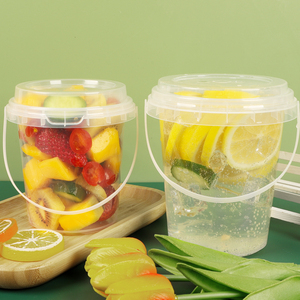Understanding Plastic: A Comprehensive Overview
Plastic is a versatile material that has transformed industries and everyday life since its invention. Derived from polymers, plastics can be molded into different shapes and forms, making them incredibly useful in various applications. They are lightweight, durable, and resistant to moisture, making them a preferred choice across multiple sectors, including packaging, construction, and consumer goods. This introduction will delve into the different types of plastic, their features, applications, and advantages.
Types of Plastic: Exploring the Variety
Plastic comes in numerous types, each with unique characteristics suited for specific applications. Here are the most common categories:
- Thermoplastics: These plastics can be melted and reshaped repeatedly without altering their chemical properties. Examples include polyethylene (PE), polypropylene (PP), and polyvinyl chloride (PVC).
- Thermosetting Plastics: Once molded and hardened through a chemical process, these plastics cannot be remelted or reshaped. Common examples are epoxy resin and phenolic resin.
- Bioplastics: Made from renewable sources like corn starch, these plastics aim to reduce environmental impact and are often biodegradable.
- Engineering Plastics: These high-performance materials offer superior mechanical and thermal properties compared to regular plastics, making them ideal for demanding applications. Examples include polycarbonate and nylon.
Applications of Plastic: Versatile and Essential
Plastics have a wide array of applications across various industries, demonstrating their versatility. Here are some prime examples:
- Packaging: From bottles to food containers, plastics offer moisture resistance and durability, ensuring items remain fresh and protected.
- Construction: Used in pipes, siding, and insulation, plastics contribute to energy efficiency and cost savings in building projects.
- Consumer Goods: Everyday items, such as toys, electronics, and sporting equipment, heavily utilize plastic due to its lightweight and durable nature.
- Medical Uses: Sterile disposable instruments and packaging for pharmaceuticals rely on plastics for hygiene and safety.
Advantages of Plastic: Why It's Preferred
The advantages of plastic make it an indispensable material in numerous applications:
- Durability: Plastics resist wear, corrosion, and impact, making them ideal for long-lasting products.
- Lightweight: Compared to metals and glass, plastics are significantly lighter, reducing transportation costs and energy consumption.
- Cost-Effective: The manufacturing processes for plastics are generally more economical, leading to lower production costs.
- Versatility: Plastics can be molded into virtually any shape or form, allowing for creativity in design.
- Low Maintenance: Plastic products often require minimal upkeep, making them convenient for users.
In conclusion, plastic is a dynamic material that enhances product design and functionality across diverse sectors. Its various types, widespread applications, and numerous advantages make it essential in today's economy. Understanding the multifaceted nature of plastic helps us leverage its benefits while being mindful of sustainability and environmental impact.


































































































































































































































 Ready to Ship
Ready to Ship




